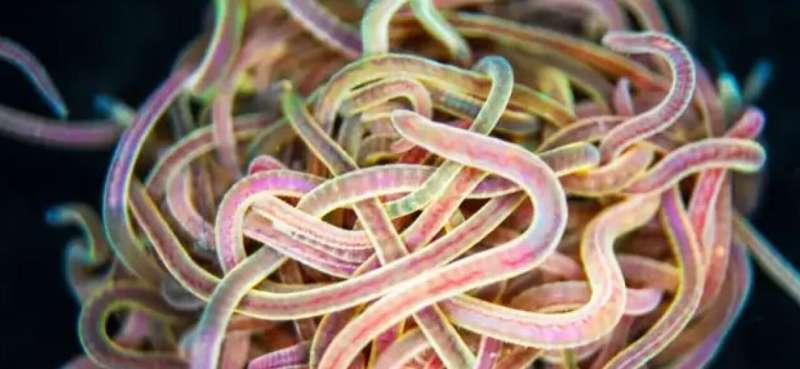
The slimy, segmented, bottom-dwelling California blackworm is about as unappealing as it gets—but get a few dozen or thousand together, and they form a massive, entangled blob that seems to take on a life of its own.
It may be the stuff of nightmares, but it is also the inspiration for a new kind of robot. “We look at the biological system, and we say, ‘Look how cool this is,'” said Senior Research Fellow Justin Werfel, who heads the Designing Emergence Laboratory at the Harvard John A. Paulson School of Engineering and Applied Sciences (SEAS). Werfel is hooked on creating a robotic platform that’s inspired by a wriggling ball of blackworms and that, like the worms, can accomplish more as a group than as individuals.
Recently garnering a Best Paper on Mechanisms and Design award at the IEEE International Conference on Robotics and Automation, the Harvard team’s blackworm-inspired robotic platform consists of soft, thin, worm-like threads made out of synthetic polymer materials that can quickly tangle together and untangle.
Each robot is about a foot long and individually powered; when an internal air chamber is pressurized, the robot “worm” curls up, and when multiple robots curl near each other, they tangle into a blob. As with the living worms, the resulting mass of entangled bots can move around as a cohesive unit, operating on both land and in water.
The long-term goals of the project are to study the dynamics of group behaviors that emerge from physical entanglement, and to endow those capabilities onto artificial systems that could, for example, explore large spaces, cross gaps, move objects, climb up buildings, and more.

“Is the physical entanglement not just the means of cohesion, but also a channel for communication and coordination?” Werfel said. “Here’s a platform that we can use to study those kinds of things.”
The team also hopes to develop an untethered version that uses microfluidics to guide its actions. Eventually, blobs of many independent robots will move through natural environments with full autonomy.
Harvard John A. Paulson School of Engineering and Applied Sciences
Citation:
Wriggling robot worms team up to crawl up walls and cross obstacles (2025, July 15)
retrieved 15 July 2025
from https://techxplore.com/news/2025-07-robot-worms-team-walls-obstacles.html
This document is subject to copyright. Apart from any fair dealing for the purpose of private study or research, no
part may be reproduced without the written permission. The content is provided for information purposes only.
